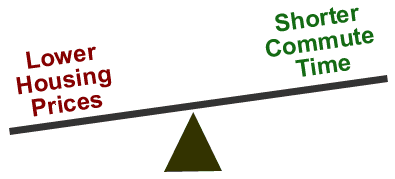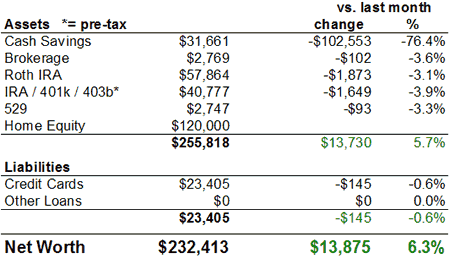Here are some posts I found useful while reading my fellow financial bloggers and more:
SingleGuyMoney shares some of his rental property issues. Apparently even buying a home warranty from American Home Shield won’t ease all repair headaches, as it doesn’t cover pre-existing problems (even if they were unknown).
PaidTwice shares why she doesn’t care what her house is worth. I agree in that my housing payment is pretty much set for the foreseeable future. If anything, I want prices to go down. Because that means that my friends might be able to afford a house, and then I can perhaps get a good deal on a second property.
Canadian Capitalist shares his notes from the 2007 Berkshire Hathaway Annual Report. It’s actually pretty fun to read, although I do admit I usually get bored after a few pages and have to read it in parts.
The Honest Dollar advises us to avoid the recency bias. Seriously. Can we finally admit that we can’t see 3 years ahead? Just a few years ago the “experts” were saying how the economy is so resilient and earnings are solid and blah blah blah. Now it’s all “recession-proof your portfolio!”. Tune out all this noise!! Nowhere in my asset allocation decision process is there a factor of “does the market look gloomy?”
Jim at Blueprint For Financial Prosperity talks about the Airborne class action lawsuit. High school teacher who “got sick a lot” doesn’t make wonder drug? Shocker!
JD of GetRichSlowly points out another reason to be wary of gift cards. If you have some Sharper Image gift cards – congratulations! They’re useless.
A co-worker sent me this Couch-to-5K Running Plan. Seems like a good guide to get off your tush and finish a 5K if you’ve never done one before. If I was clever I’d find some parallels with personal finance.
 With my new fat mortgage, I’m considering whether to also take out a Home Equity Line of Credit (HELoC). This is not a home equity loan where you take out a lump sum at a fixed rate, but is a line of credit usually at a variable rate. I think of it as a credit card that is secured by my house (!). I don’t plan on actually using it, but I think it might nice to have around as long as the upfront costs to me are minimal. Here’s why:
With my new fat mortgage, I’m considering whether to also take out a Home Equity Line of Credit (HELoC). This is not a home equity loan where you take out a lump sum at a fixed rate, but is a line of credit usually at a variable rate. I think of it as a credit card that is secured by my house (!). I don’t plan on actually using it, but I think it might nice to have around as long as the upfront costs to me are minimal. Here’s why: I’m sure the foodies already know about this site, but I just learned about it recently so I figured I’d throw it out there for discussion…
I’m sure the foodies already know about this site, but I just learned about it recently so I figured I’d throw it out there for discussion…  From Washington, D.C. to New York City, from Atlanta to Portland, a huge part of finding a house is balancing the desire to have a shorter commute to work and the higher price tag that inevitably comes with it. Some people live farther away to spend less, while others simply want more house for the same price. I know people who commute 2 hours each way, every day. They are not alone – According to the
From Washington, D.C. to New York City, from Atlanta to Portland, a huge part of finding a house is balancing the desire to have a shorter commute to work and the higher price tag that inevitably comes with it. Some people live farther away to spend less, while others simply want more house for the same price. I know people who commute 2 hours each way, every day. They are not alone – According to the 


 The virtual phone service GrandCentral has been invite-only beta for several months. But now the blog service Blogger (also owned by Google) is
The virtual phone service GrandCentral has been invite-only beta for several months. But now the blog service Blogger (also owned by Google) is  I’ve already written about
I’ve already written about  The Best Credit Card Bonus Offers – May 2024
The Best Credit Card Bonus Offers – May 2024 Big List of Free Stocks from Brokerage Apps
Big List of Free Stocks from Brokerage Apps Best Interest Rates on Cash - May 2024
Best Interest Rates on Cash - May 2024 Free Credit Scores x 3 + Free Credit Monitoring
Free Credit Scores x 3 + Free Credit Monitoring Best No Fee 0% APR Balance Transfer Offers
Best No Fee 0% APR Balance Transfer Offers Little-Known Cellular Data Plans That Can Save Big Money
Little-Known Cellular Data Plans That Can Save Big Money How To Haggle Your Cable or Direct TV Bill
How To Haggle Your Cable or Direct TV Bill Big List of Free Consumer Data Reports (Credit, Rent, Work)
Big List of Free Consumer Data Reports (Credit, Rent, Work)